2014: Two evenings close to lake Ammersee
In April and August near Andechs and in Issing.
Encounter Vesta / 78 Virginis above lake Ammersee
Thursday evening, April 24, 2014:
I used the clear last night to look for the Vesta - 78 Virginis encounter, and for nearby Ceres as well. A trip to a meadow about 30 km
SW of downtown Munich, equipped only with my 8x56 binoculars. Very relaxing on a bench overlooking lake "Ammersee" in the West,
detecting a pair of ravens performing some acrobatic flight maneuvers, and with a nice sunset above the lake below.
18:35 CEST: View to south with Hohenpeissenberg (alt. 988 m)
When having clear skies the Alps with Zugspitze (alt. 2963 m) are very well to see.

|
|
A yellowhammer in the near coppice sang its
typical song (Example on YouTube)

|
20:20 CEST: Sunset above Lake Ammersee
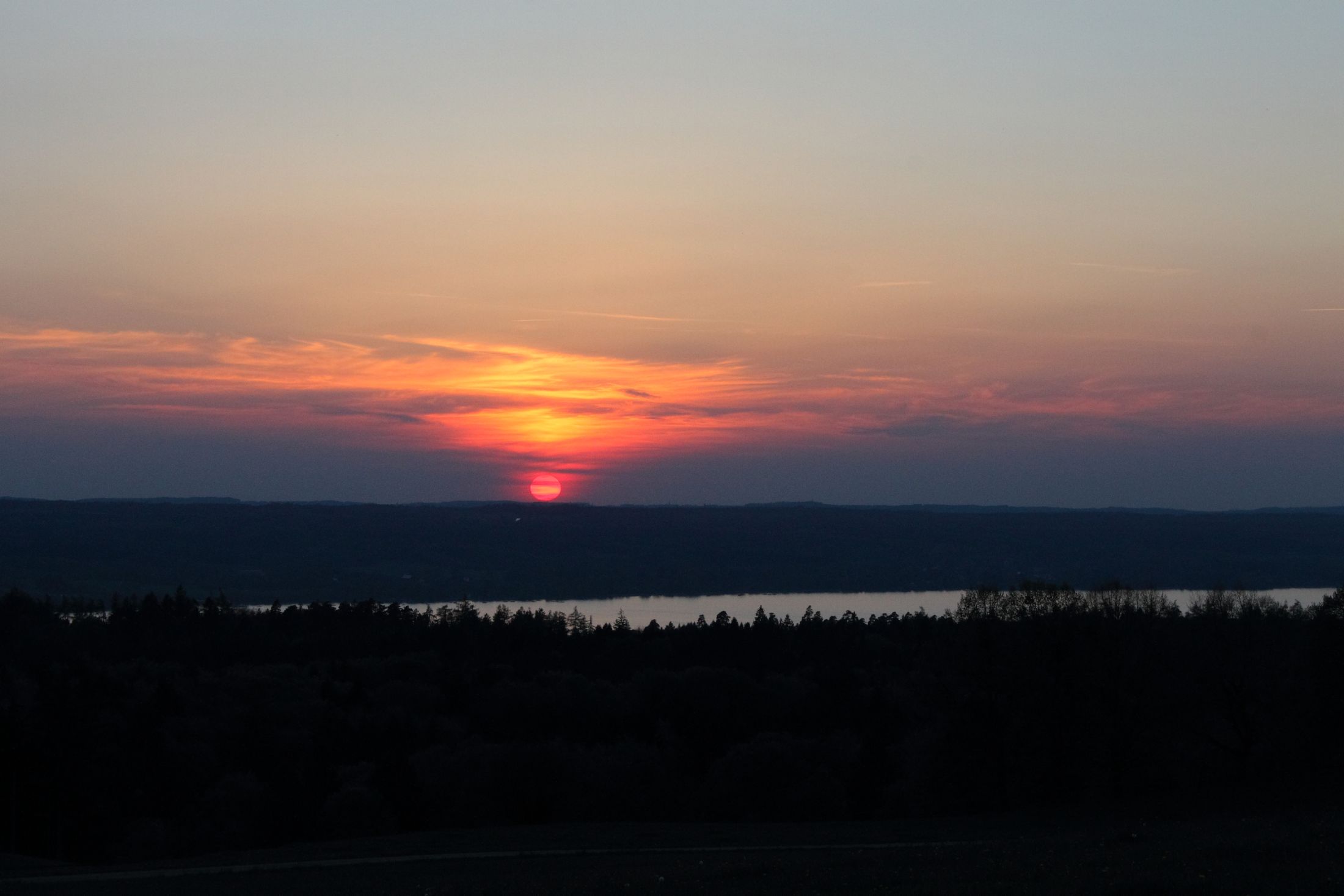
|
|
21:24 CEST: Sirius and Orion before setting
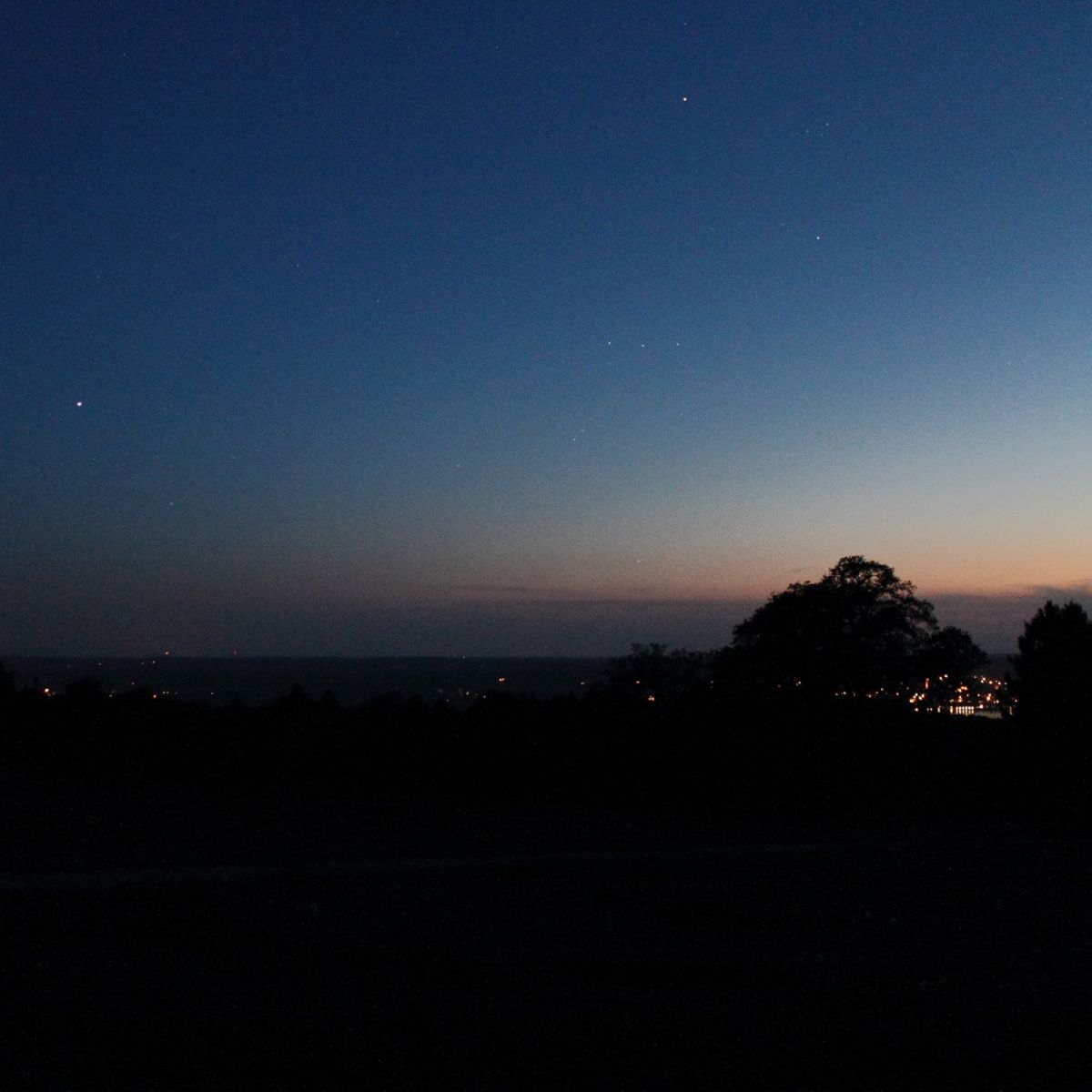
|
At nightfall Sirius, Betelgeuse and Aldebaran gave their farewell performance in the West, and I used the Hyades naked-eye double Theta Tauri (dist. 5.6')
to compare distances, together with the just rising double Epsilon Lyrae (3.5'). To discern the latter as double with the naked eye I need a good personal shape,
combined with good sky conditions, and neither was sufficiently the case yesterday - also concerning the futile try to split Vesta / 78 Virginis in the beginning.
When it was reasonably dark after 21:30 CEST (19:30 UT) the Vesta / 78 Virginis pair was already closer than Theta Tauri, but distinctly wider than Epsilon
Lyrae, maybe about 4.5' to 5'. The necessity to work on Friday made me leave the site at about 23:30 CEST, and meanwhile the distance was about equal to
that of Epsilon Lyrae - I had read that it would narrow down to about one arc-minute in our morning sky. It also came to my mind that I would probably never
again see 78 Virginis so bright again with the naked eye.
22:24 CEST: Orion is sinking into Diessen
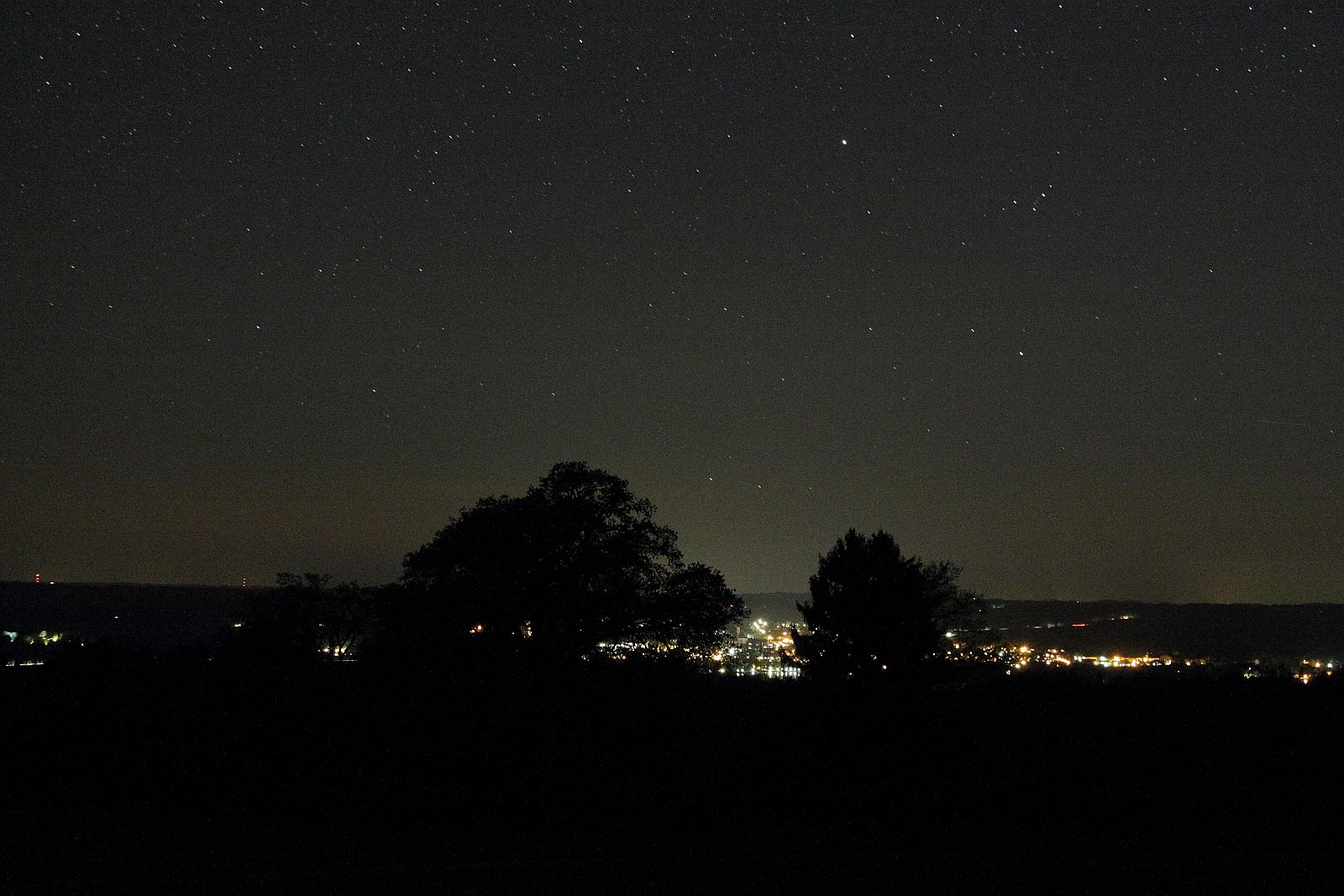
|
|
Ceres and Vesta / 78 Virginis in Virgo
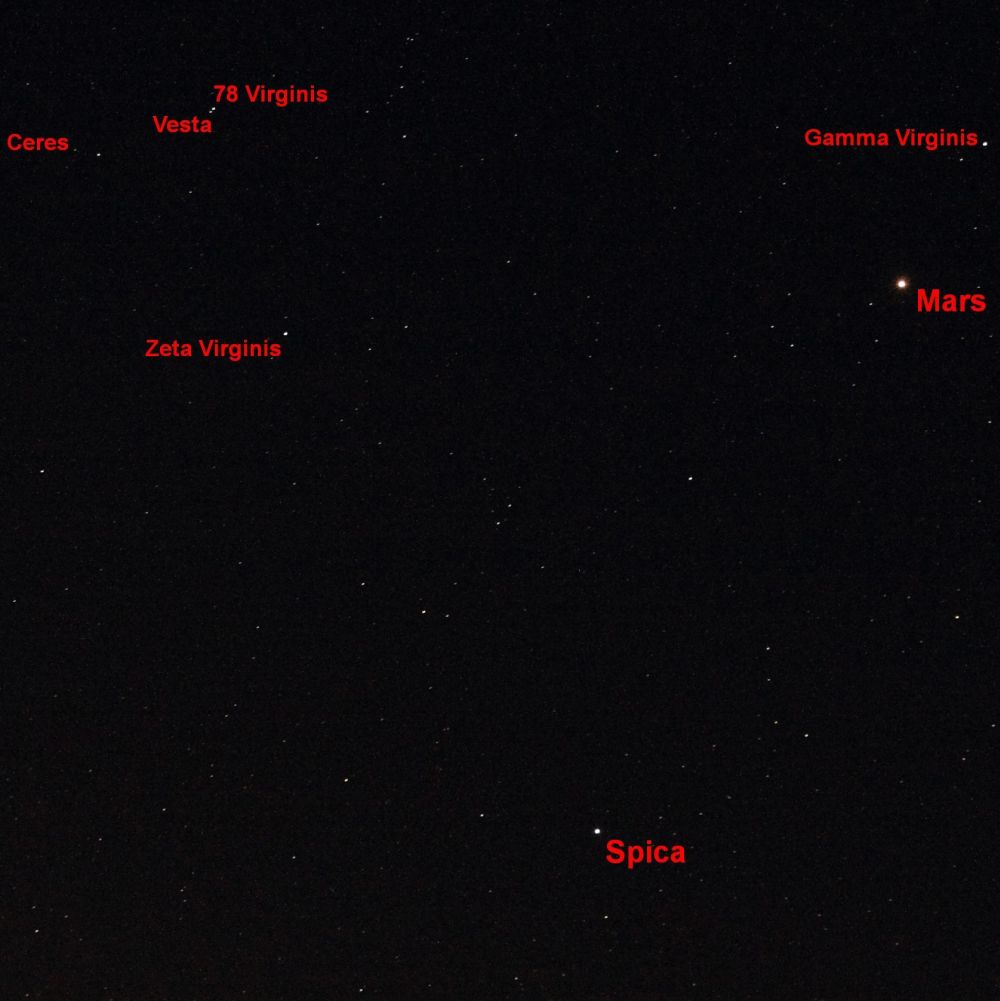
|
A bit sidewalk astronomy at a village fair in Issing
Saturday evening, August 29, 2014
Meeting Bela and his family at the stationhouse for an ample bufett. Later I offered a slightly different meal:
Opened from 21:00 to 23:30
I had taken along my 120 mm refractor, and showed e.g. the Andromeda galaxy, the open clusters h+Chi Persei and the "airplane" NGC 457,
the Ring Nebula M57, die Dumbbell M27 and some colored double stars like Ras Algethi, Albireo and Alamak. A site farther off from the
many lights would been better of course, but that would have lured far fewer people away from the feast for a short look into the telescope.
From left: Niklas, Adrian, Bela, Christine, Juergen and Theresa ...
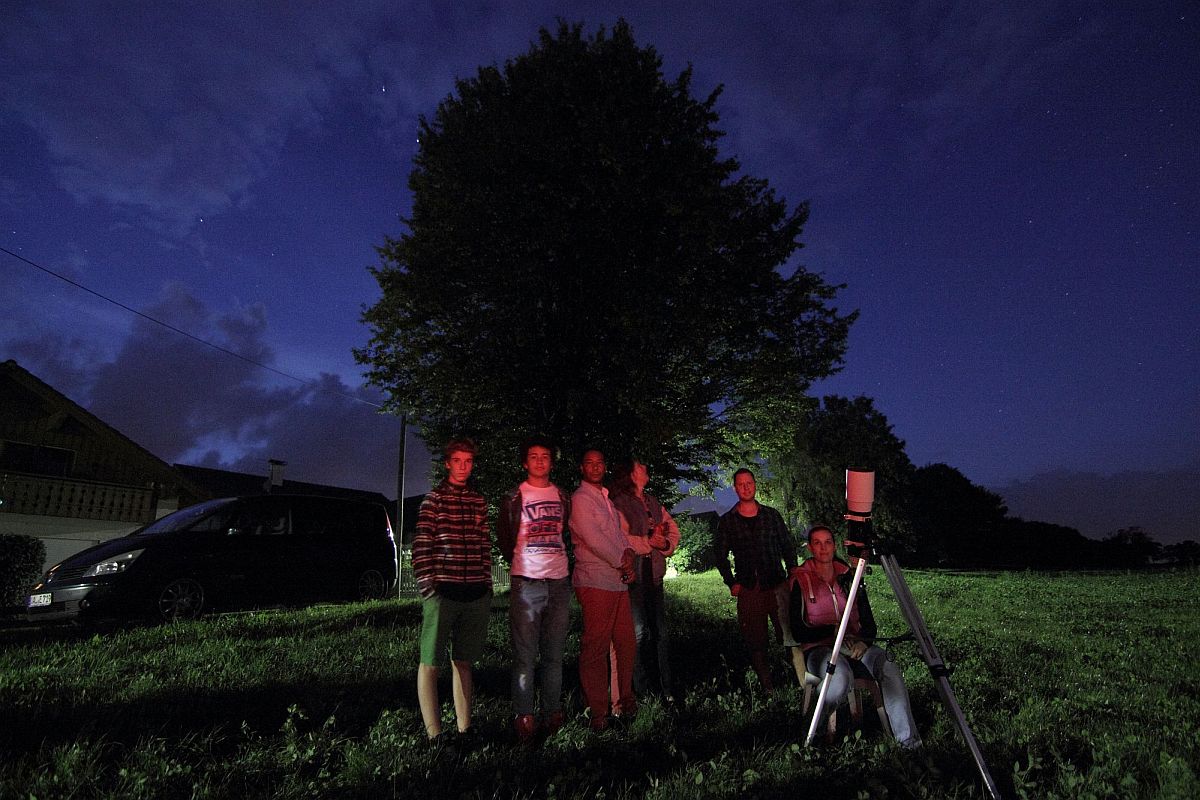
|
|
... und now with Juergen at the telescope
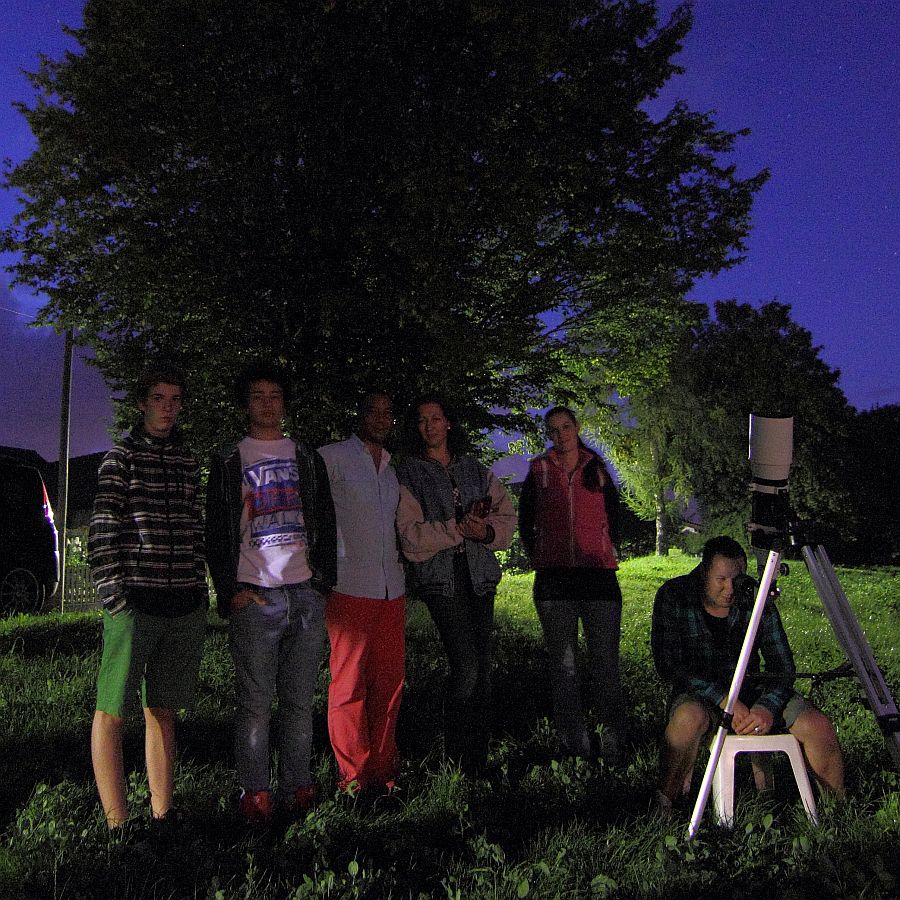
|
From left Bela, Peter, Gorbi and Elli
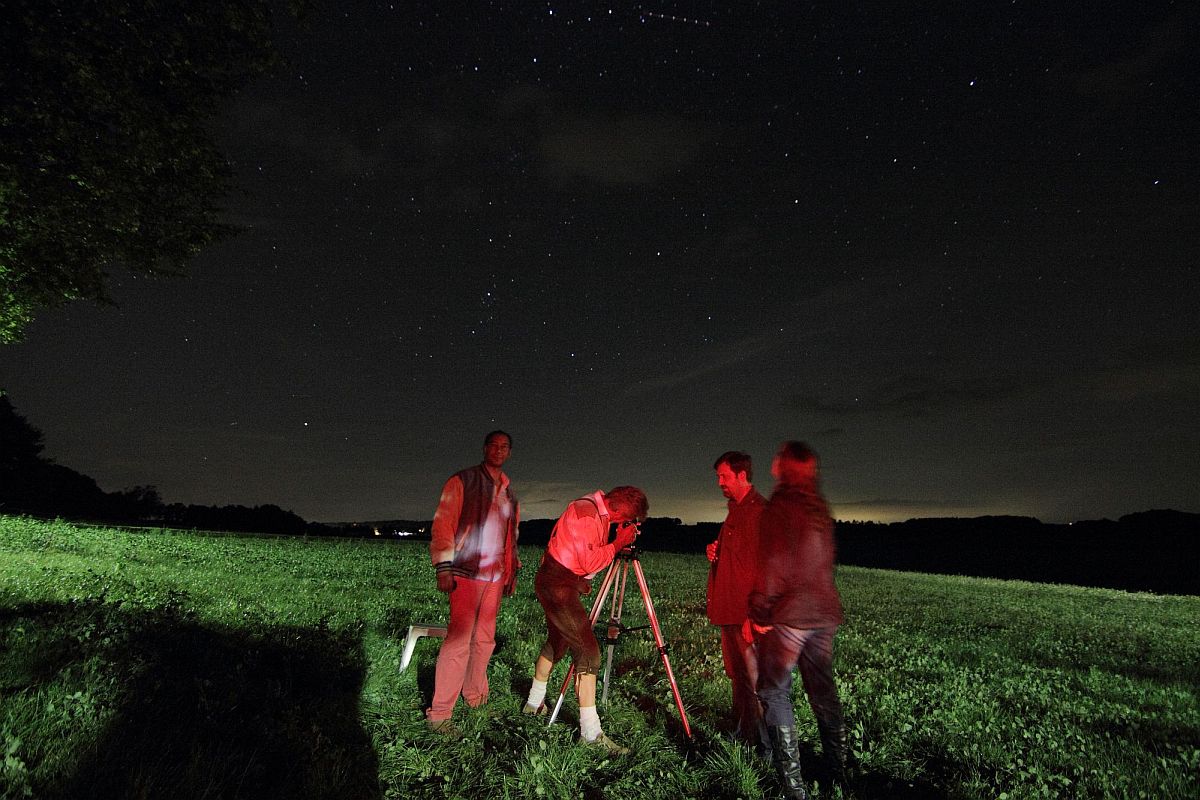
|
|
Adrian has taken along some friends
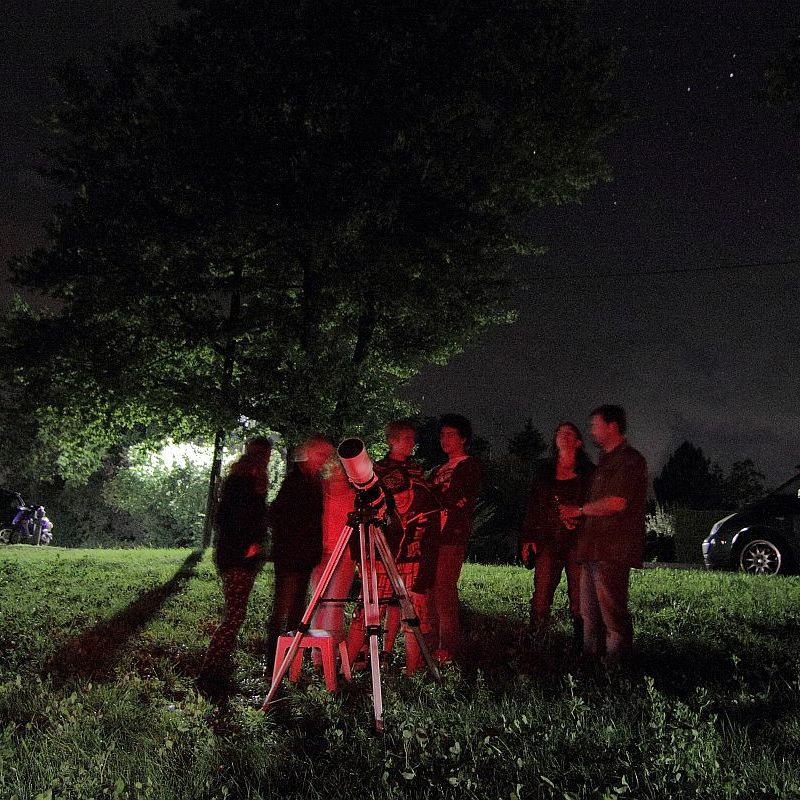
|
Back









